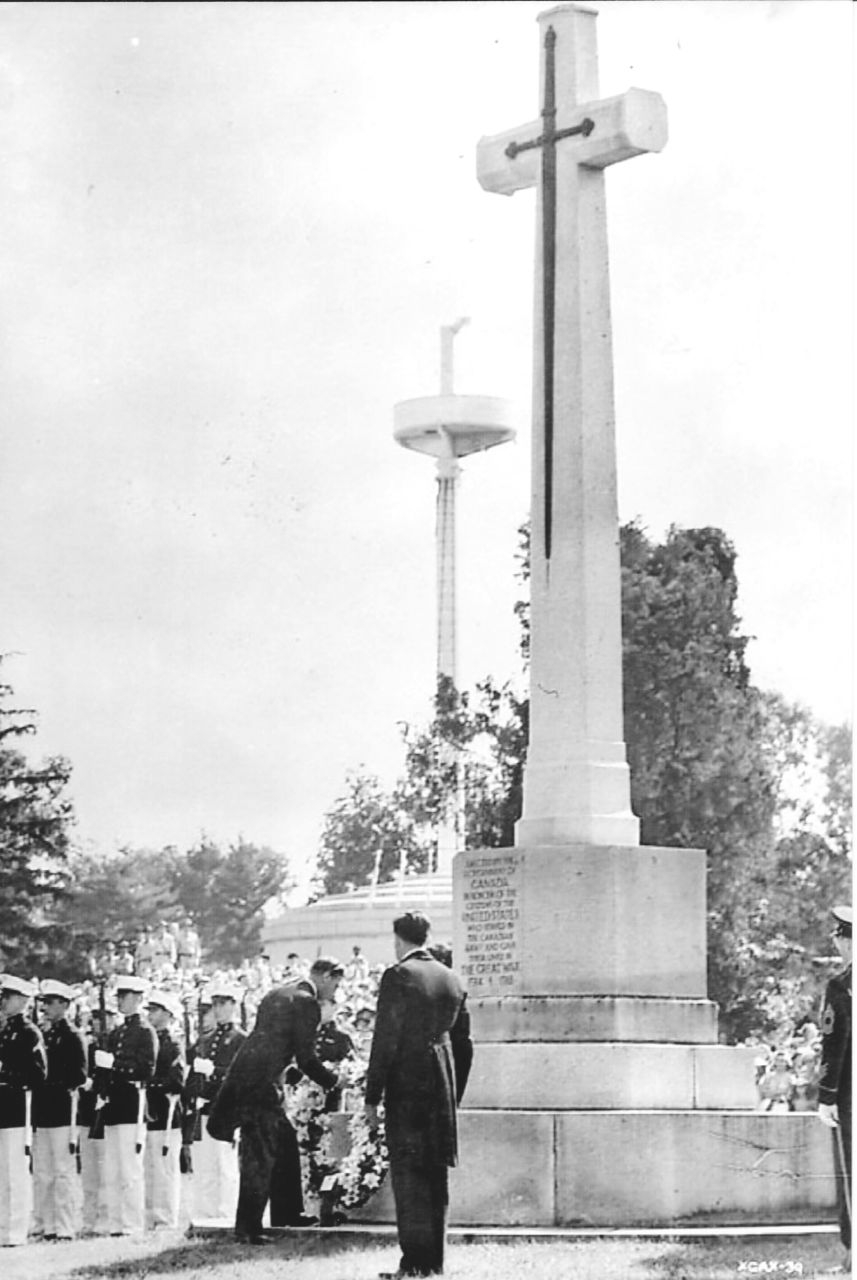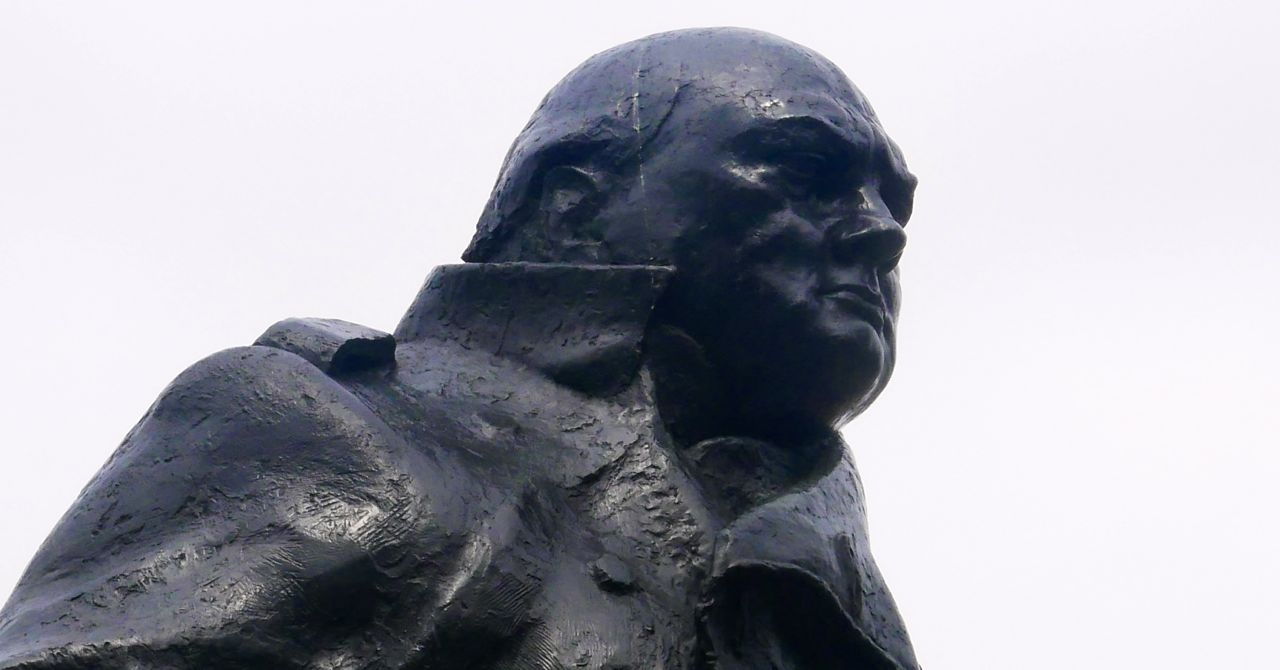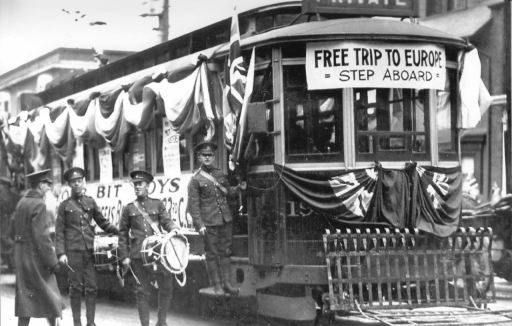Author Chris Dickon explains how many American volunteers were already veterans of the Great War in 1918 as the US built up its own army for action in Europe.
Though the United States had been officially at war for eight months at the turn of 1918, it was just beginning to get its bearings with a full force of soldiers, sailors and flyers. Previous efforts to bring the country to a state of preparedness for a potential European war had failed, and, at the time of the declaration of war, the United States had recently been occupied with the Pancho Villa Expedition on the border with Mexico.
In April 1917, the full US Army was comprised of about 200,000 officers and men, with another 97,000 in state reserve forces and an arsenal mostly comprised of 890,000 Springfield rifles. The command staff in Washington numbered twenty. It was not generally known, however, that, at the time, another American fighting force was already in action. It had been developing since the Germans had first crossed Belgium in 1914, and now totaled approximately 50,000 American citizens, or husbands, fathers and sons of American families who may or may not have been American born themselves.
Now came the time for an accounting of who they were and a determination of how they would participate in the coming American effort, if at all.
They included: an unknown number of men and women in the low thousands who had volunteered in ambulance and medical corps, mostly originating in France; approximately 200 American men who had enlisted in the French Foreign Legion; a number exceeding 250 who had formed the American Escadrille, later named the Lafayette Escadrille and expanded with the addition of the Lafayette Flying Corps, a number of them having come from the French Foreign Legion; and a number officially set by the Canadian government of 35,618 self-identified as American born men in the Canadian Expeditionary Forces, and another number as high as 13,000 in other Commonwealth Forces who had enlisted in England.

King George VI places a wreath on the Canadian Cross of Sacrifice at Arlington National Cemetery during the royal visit to Washington, June 9, 1939. The cross was erected by the Canadian Government in memory of US citizens who served and died in the Canadian Army during the First World War (Photo: Library and Archives Canada)
Though many were motivated by the desire for adventure, the need for a job, or a calling to aviation, most of these numbers had enlisted in their respective services out of a primary belief in a war that must be fought no matter the position of their own country. When the United States finally joined the war, many looked forward to moving their experience to the American effort.
For those who had volunteered medical services in France the evolution into American and international medical and ambulance services was a natural occurrence, and their work would extend to all corners of the world.
American members of the French Foreign Legion, however, seemed to be scorned by their country. After the American declaration, a large group of them wrote to President Woodrow Wilson that “we, who are, so to speak, the advanced guard of the American forces, respectfully bring your attention to the need of immediate action toward our liberation [from their agreements with the Foreign Legion, which would have been granted on request from the US], and we claim our right as American citizens to fight under our own flag. Therefore, we rely on your own patriotic spirit to see that we obtain this right without delay.”
The response they received from an adjutant general, however, seemed a rebuke. Dated June 29, 1917, it said, simply, that the War Department had no interest in accepting Americans from Allied armies, except in special cases. “The cases in question are not believed to be of such a character as to warrant the War Department in making such a request.” Offended but undaunted, the Americans continued to pursue their request with the American Embassy in Paris, though to no avail.
The Lafayette Flyers, on the other hand, seemed a very special case. By news accounts of their exploits, they had become the first American heroes of the war long before their country had entered the war. They would help the French to establish an effective air force for the duration, and the United States to establish its own air forces with the conversion of some to the 103rd Aero Squadron of the US Army in February 1918.
But what of the tens of thousands of men already firmly entrenched in the forces of the British Commonwealth? They had voluntarily enlisted, or been recruited in Canadian border cities by stealth beginning in 1914, and more openly in following years, and not without the tacit encouragement of the British.

First Lord of the Admiralty Winston Churchill suggested in a September 5, 1914 letter to fellow ministers Lord Kitchener and Sir Edward Grey that “nothing will bring American sympathy along with us so much as American blood shed in the field.”
After the American declaration, any questions about their loyalty or citizenship were answered by a law signed October 5, 1917 that restored the citizenship to all Americans in foreign forces if it was deemed to have been lost.
By January 1918, the United States and the British Commonwealth were fully in sync in their funneling of each other’s nationals toward the war through agreements to mutually support their common draft and enlistment efforts. It became nearly impossible for the citizen of one country to avoid service through residence in another country.
And it became difficult for an enlistee in a foreign force to return to the forces of his own country. After much deliberation, the US War Department determined that by now these were common forces fighting a common enemy and it made little difference with whom they fought. Indeed, the transfer of Americans out of Commonwealth units might be disruptive and damaging to the effectiveness of the whole. Exceptions could only be made if 1) British commanders recommended an individual transfer, 2) the individual then presented himself to the American military attaché in London to request transfer, 3) and, if granted, he traveled to France at his own expense to join American Expeditionary Forces.
After the war, laws were passed in the United States granting those Americans who fought in Commonwealth forces full equality and standing with those in American forces, including the right to burial in American war cemeteries. By that time, though, they had been buried in Commonwealth War Graves Commission cemeteries, where approximately 2,700 still rest, ostensibly as citizens of Commonwealth nations and without notation of their American origins.
Chris Dickon is author of Americans at War in Foreign Forces, and a recent biography of American World War I poet Alan Seeger.
See also in Centenary News:
Centennial tribute to US WW1 pilots at restored Lafayette Escadrille Memorial in France, April 2016.
© Chris Dickon & Centenary News
Images courtesy of City of Toronto Archives, Fonds 1244, Item 728 (recruiting streetcar); Library and Archives Canada: PA-209854(King George VI/Arlington National Cemetery); Centenary News (Churchill)
